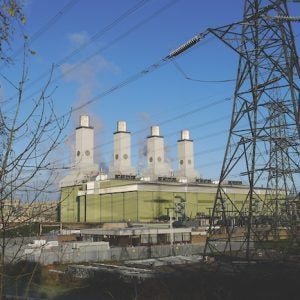
The Integrated System Plan (ISP) is the result of two years of consultation, analysis and review involving 2100 stakeholders, 85 presentations and reports, and the consideration of 220 formal submissions.
AEMO says the ISP confirms that renewable energy connected with transmission and distribution, firmed with storage, and backed up by gas-powered generation is the lowest-cost way to supply electricity to homes and businesses as Australia transitions to a net zero economy.
Urgency to renew the National Energy Market is being driven by the progressive closure of Australia’s remaining coal-fired power stations. Ten large coal-fired power stations have closed since Munmorah ceased operation in 2012, the latest being Liddell in April 2023. The ISP projects that 90% of today’s capacity will be closed by 2035 and all before 2040.
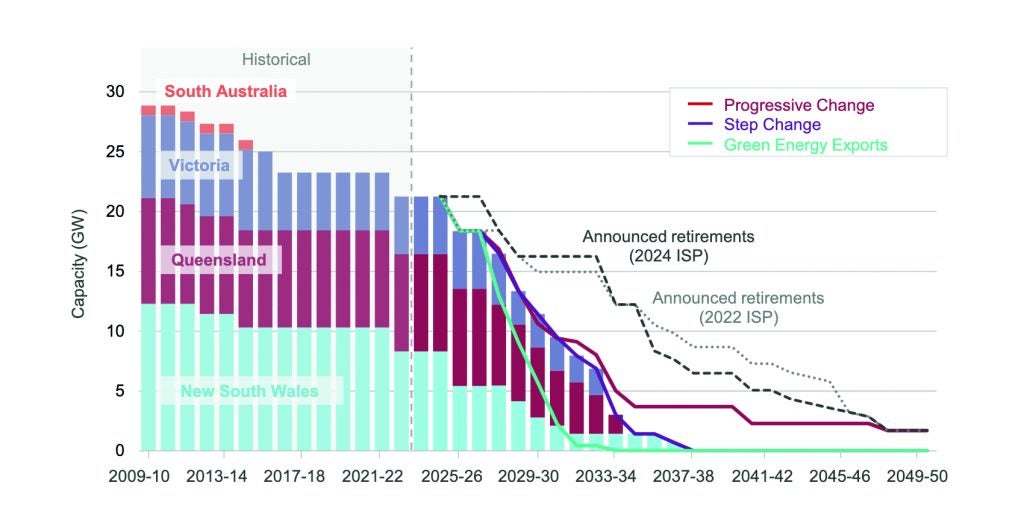
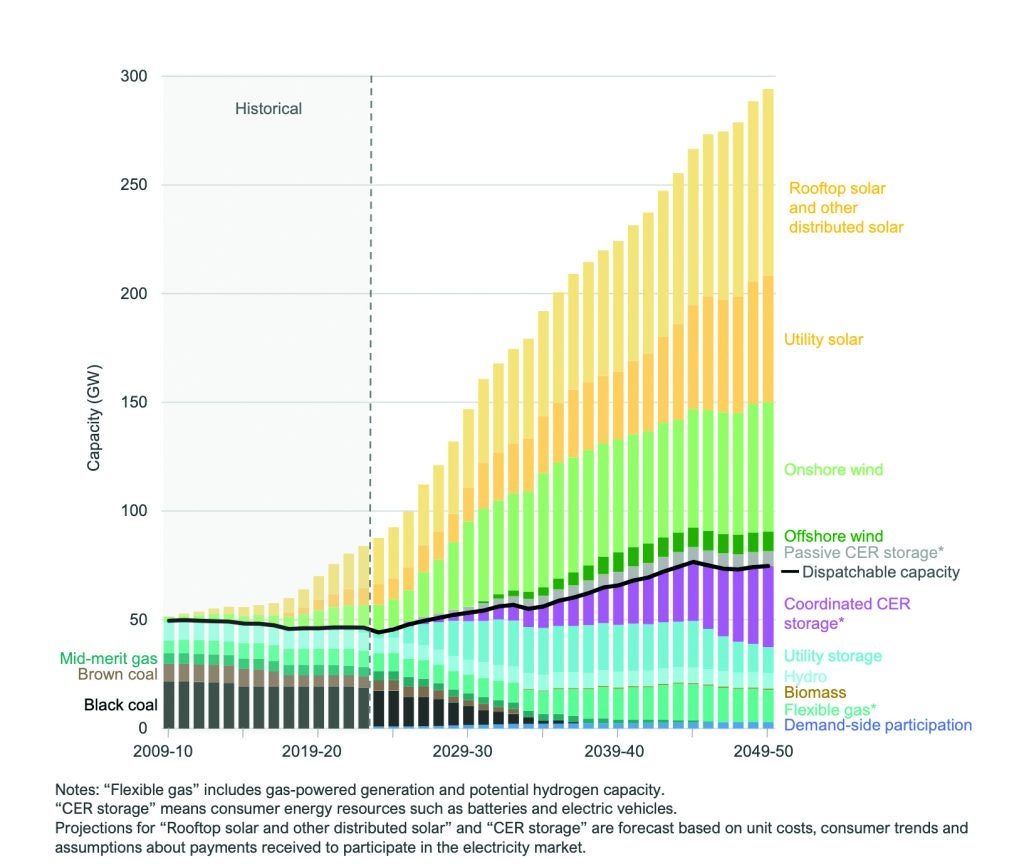
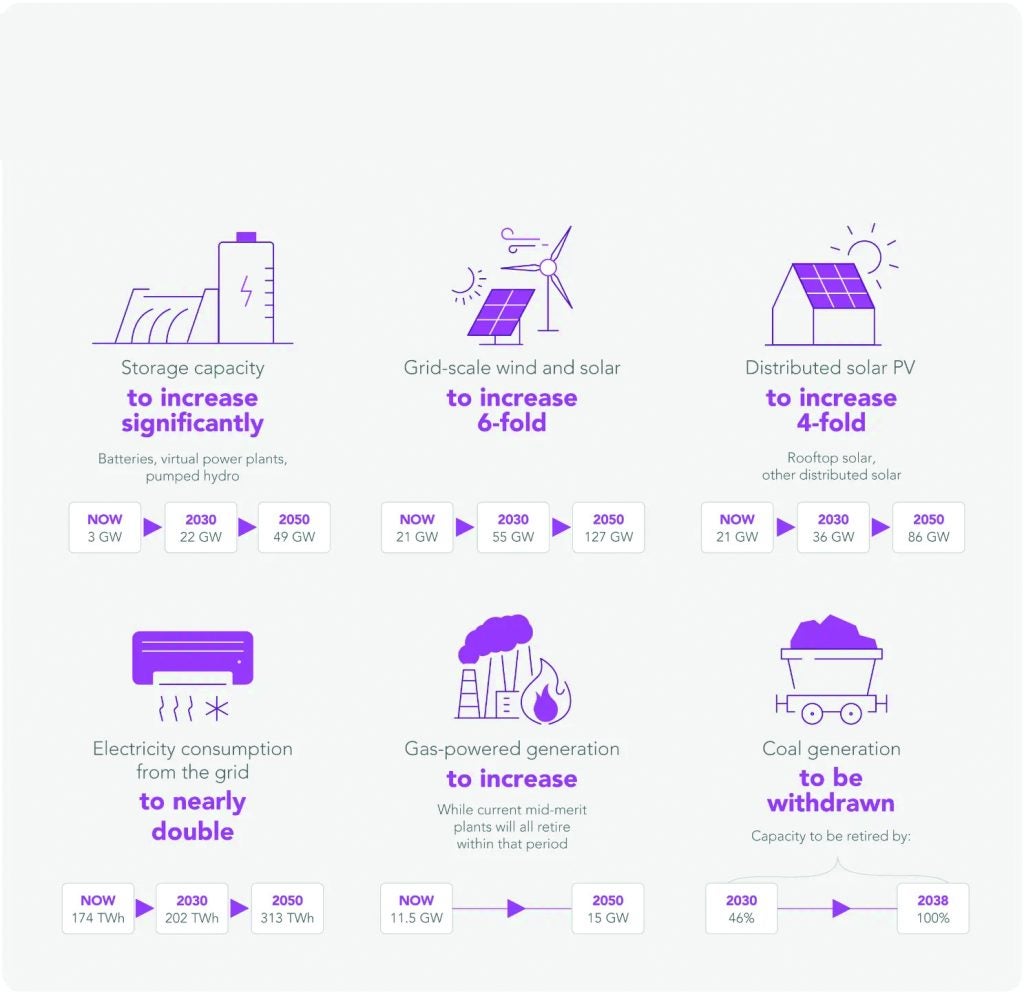
The centrepiece of the plan is the “optimal development path” (ODP) — a mix of replacement grid-scale generation, storage, and transmission, with an annualised capital cost of $122 billion to 2050.* The ODP is said to be the least cost path to meet federal and state government energy policies on emissions reductions.
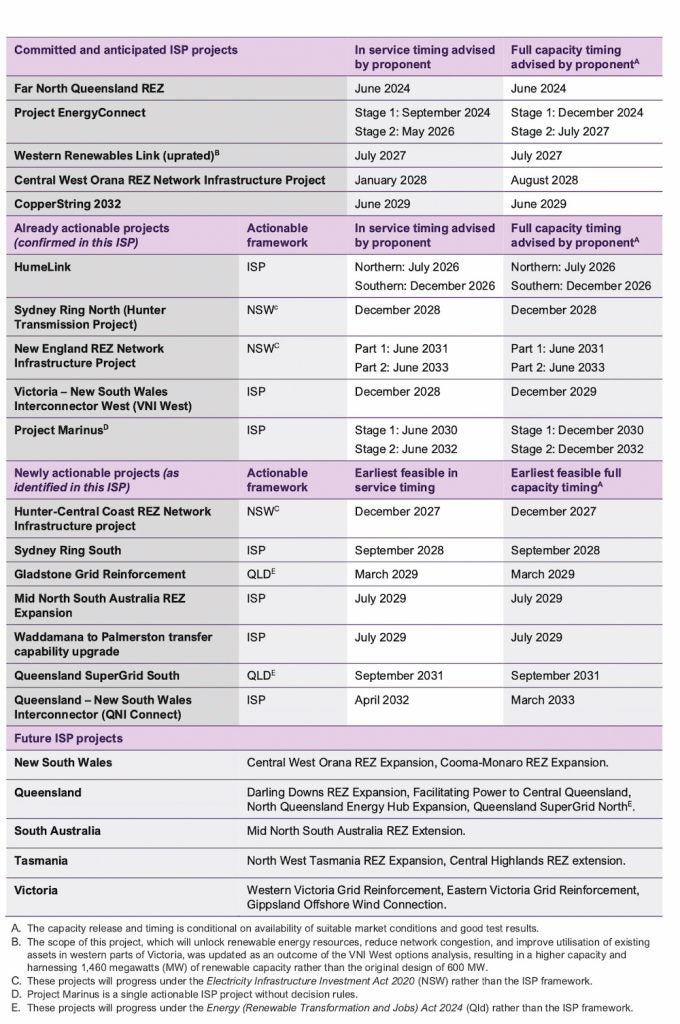
“The ISP is a roadmap to navigate Australia’s power system through the energy transition, providing Australians with reliable electricity at the lowest cost,” said AEMO CEO Daniel Westerman.
The key messages of the new plan are consistent with previous editions, which AEMO produces every two years under Australian energy laws.
Those laws also set out what AEMO must address in the ISP. That includes government policies and targets. Interestingly the ISP does not model nuclear power as it is not government policy and in fact is not permitted by Australia’s current laws.
According to Westerman, “Australia’s energy transition is well underway”, with renewable energy accounting for 40% of electricity used in the past year.
Consistent with previous reports, the plan identifies almost 10 000 km of new transmission lines that are required by 2050 to connect new sources of generation and meet reliability targets at the lowest cost to consumers.
Ten transmission projects, or 2500 km, are already underway, and the new ISP identifies a further seven projects that should now progress through planning and delivery.
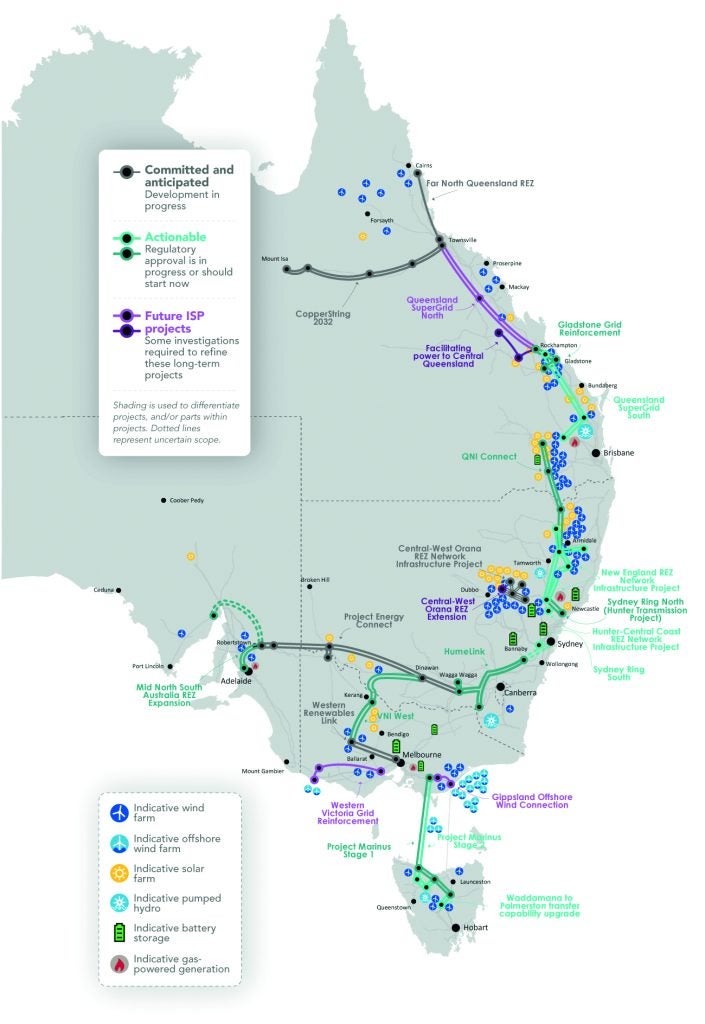
AEMO says it recognises the clear need for early community engagement and effective consultation on these projects.
The transmission projects will cost about $16 billion but are expected to recoup their investment costs and, additionally, save consumers $18.5 billion in avoided energy costs and deliver emissions reductions valued at a further $3.3 billion.
Gas plays a crucial energy transition role in back-up electricity generation for sustained periods when renewables are unavailable, and “its contribution is integral to the ISP.”
The other crucial technologies factored into the roadmap are domestic rooftop solar panels and associated batteries, smart systems and electric vehicles, or what the ISP calls ‘consumer energy resources’.
Home batteries, if well co-ordinated, can save consumers around $4.1 billion in avoided costs for additional grid-scale investment, the ISP estimates.
“Consumers are already a driving force in Australia’s energy transition and this is set to continue. If consumer devices like solar panels, batteries and electric vehicles are enabled to actively participate in the energy system, then this will result in lower costs for all consumers,” Westerman suggested.
The ISP also calls out the challenges and risks to the energy transition. Planned projects are facing delivery challenges, including approval process delays, investment uncertainties, cost pressures, social licence issues, supply chain disruptions, and workforce shortages.
“There is a real risk that replacement generation, storage and transmission may not be available in time when coal plants retire, and this risk must be avoided,” Westerman said.
*This $122 billion value includes transmission augmentation, utility-scale generation and storage capex, and does not include the cost of commissioned, committed or anticipated projects, consumer energy resources, distribution network upgrades.





